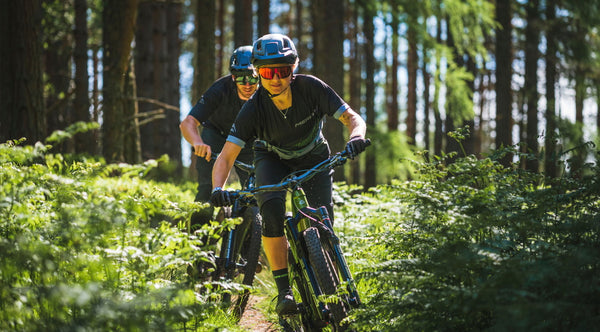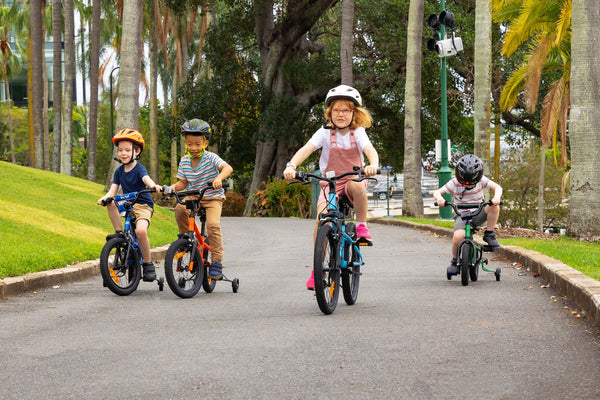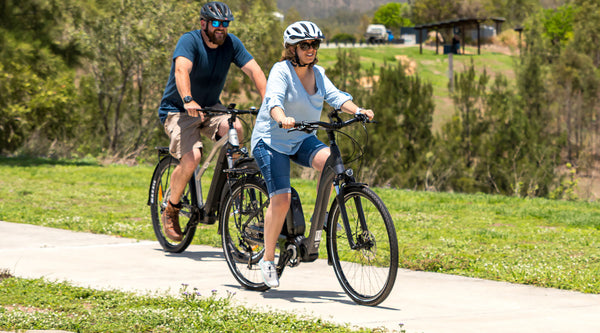Choosing the right mountain bike can be a daunting task, with so many options on the market. Here is a breakdown of the different mountain bike types and factors to consider when choosing the best mountain bike for your needs.
Determine Your Riding Style
The first step in choosing a mountain bike is to determine your riding style. Are you planning on riding casually, cross-country, trail, all-mountain, enduro, or downhill? Each type of mountain biking requires a different type of bike, so it's important to know what you'll be using it for.
The Types Of Mountain Bikes
Sport & LeisureVersatile and affordable, these bikes are best for riders looking for an entry level bike for basic riding on gravel, bike path and rail trail. Their cheap price and versatility make them an appealing choice, but keep in mind these will not be the most durable if you want to head out into the singletrack and are best kept to more casual riding. Best for:
|
 |
Cross-Country (XC)The ultimate speed machines, cross-country bikes are light, fast and built for distance and climbing. The shorter suspension travel than their trail counterparts mean they are lighter and easier to pedal up hills. They also often come with 29er wheels to provide the maximum rolling over ability to keep things going fast. Best for:
|
 |
TrailThe workhorse of the MTB world, trail bikes offer the sweet spot between speedy but less capable XC bikes and the big mountain loving but slow on the up enduro bikes. Available in both hardtail and full suspension options depending on how rowdy you want to get. Trail bikes often have a suspension travel around 120-140mm making them plush and comfortable on more techy trails, without sucking the energy out of your pedal strokes on the up. Best for:
|
 |
Enduro / All-MountainBuilt for rowdy riders who love descents and techy terrain. With generous suspension travel (think 150-180mm) durable frames and components and wide grippy tyres. These bikes are built tough but are still able to be pedaled up hills, their just a bit more effort than their trail counterparts but shine on the descents by softening big bumps and drops. Best for:
|
 |
DownhillThe big-dog of the bike world, downhill bikes are built exclusively for bombing down technical descents. At home in gondola assisted and shuttle bike parks, you won't see one of these on your local cross country tracks, that's because they are built to be burly and durable with suspension for big hits (think 180-200mm), which makes them very heavy. With gears to cater to descents only, there's no easy gear for pedaling uphill on a downhill bike. Best for:
|
 |
Things to consider:
Suspension
The type of suspension you choose depends on your riding style. If you're planning on riding cross-country or on smoother trails, a hardtail (no rear suspension) will be sufficient as well as efficient. For rougher terrain, you may want a full-suspension bike with both front and rear suspension. A good thing to keep in mind when choosing a full suspension bike is that the longer the travel the more capable it is on harder terrain to soak up the big knocks, however you’ll find it a bit harder to pedal up hills than a shorter travel bike. As a general rule of thumb, bikes with 100-120mm of travel are cross-country focused, bikes with 120-140mm travel are trail focused and bikes 150-180mm are enduro and all-mountain focused, then anything over that up to 200mm are downhill focused.
 |
 |
| View Hardtail MTB's | View Full Suspension MTB's |
Wheel Size
Mountain bike wheels come in three main diameters:
- 26-inch wheels used to be the standard diameter, but are hard to find these days and have been superseded by the larger diameters.
- 27.5-inch wheels are very popular thanks to their quick speed pickup as well as agility and easy handling around corners, these are the most common wheel diameter and excellent for beginners.
- 29-inch wheels are increasingly popular thanks to their ability to roll over obstacles and carry speed once in motion, which is why they have become increasingly popular for cross-country racing due to their efficiency.
- 29/27.5-inch, affectionately nicknamed a ‘mullet’ with a 29” at the front and a 27.5” on the back to give the best of both worlds, you’ll find a mullet only on some full suspension electric bikes or enduro and downhill bikes, but it is becoming increasingly popular for those disciplines.
Determining the best wheel size is often based on personal preference, considering the rolling characteristics you’d like for the type of riding you’ll be doing. Luckily, bike manufacturers keep this in mind when designing their bikes and make sure to choose the right wheel diameter for the type of bike they’ve made. Some brands also offer size split systems where smaller sizes roll on 27.5” and larger sizes roll on 29” to better cater to the geometry of riders of different heights.
Frame Material
The most common materials used for mountain bike frames are aluminum, carbon fiber, and steel. Aluminum is the most popular due to its affordability and durability. Carbon fiber is lighter and more expensive, while steel is the heaviest but provides a smooth ride.
Fit
Fit is incredibly important on a mountain bike because it can greatly impact your comfort, control, and performance while riding. A properly fitted bike will allow you to ride more efficiently and with greater confidence, while also reducing the risk of injury.
Here are some things to consider when choosing the right size for your mountain bike:
Height: The most important factor in determining the right bike size is your height. Most bike manufacturers provide size charts that recommend the appropriate size based on your height. It's important to use this as a starting point and then adjust as necessary based on other factors.
Standover height: The standover height is the distance between the ground and the top tube of the bike frame when the bike is standing upright. This measurement is important for ensuring that you can comfortably stand over the bike when you need to. By measuring your inseam you can compare with the standover height of the bike you want and confirm there is clearance for you to comfortable stand over the frame.
Reach: The reach is the distance between the saddle and the handlebars. It's important to have a reach that feels comfortable and allows you to easily reach the handlebars while maintaining a proper riding position.
Stack: The stack is the distance between the bottom bracket and the top of the head tube. This measurement can impact the height of the handlebars and the overall riding position. If you prefer a more upright riding position, look for a bike with a higher stack measurement.
Overall, it's important to choose a bike size that feels comfortable and allows you to ride with proper body position and control. Don't be afraid to test ride different sizes and make adjustments to the bike's fit, such as changing the stem length or adjusting the saddle height, to achieve the best fit for your needs.
Budget
Determine your budget before you start shopping and look for a bike that fits your needs within your price range. Once you have your budget set you can then compare the specifications between the different models and decide which one will work best for you.
Buying new vs secondhand
While buying a used bike can save you money upfront, there are several reasons why you might want to consider buying a new bike instead. For one, a new bike will come with a warranty, which means that you'll be covered in case of any issues. Additionally, a new bike will be in factory fresh condition, compared to a used bike which will have wear and tear from previous use. With a new bike, you'll have the peace of mind of knowing that it hasn't been subjected to any hard use or neglect. Another big bonus is buying a new bike allows you to choose from the latest models and technologies, which have progressed rapidly in recent years. This means that you'll be able to get a bike that's tailored to your specific needs and preferences, and that will perform at its best for years to come.
Test Ride
Once you've narrowed down your options, we highly recommend you test ride the bikes you're considering. This will give you a chance to see how the bike feels and handles, as well as the size fit, which will help you make an informed decision.
In conclusion, choosing the best mountain bike for your needs involves considering factors such as your riding style, suspension, wheel size, frame material, fit, budget, and test riding. With these factors in mind, you can find a mountain bike that meets your needs and allows you to enjoy your time on the trails.
We're also hear to help, head into one of our stores in Auckland, Rotorua, Wellington and Christchurch, or contact us online and our experienced team will be happy to help recommend a bike based on your needs.





